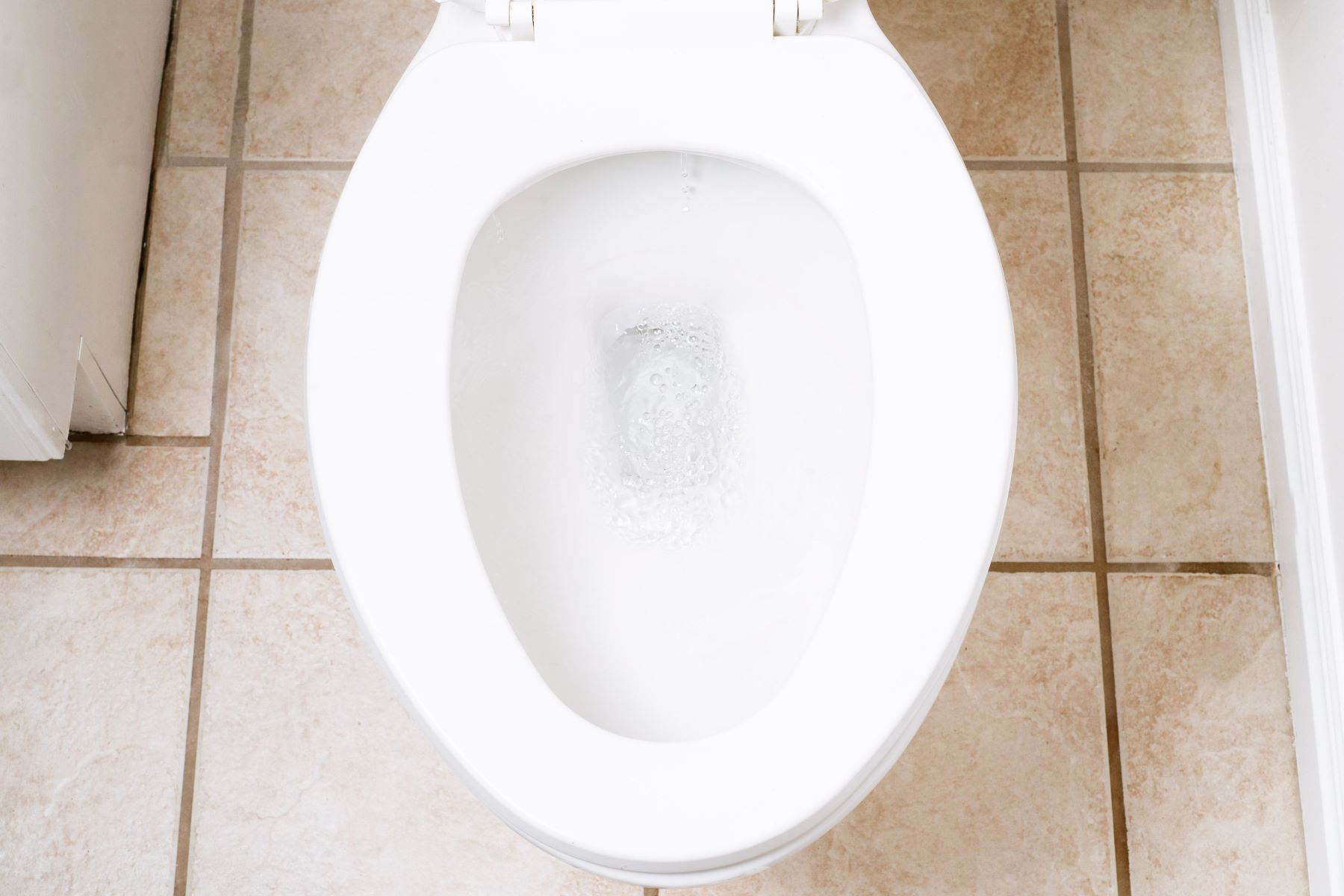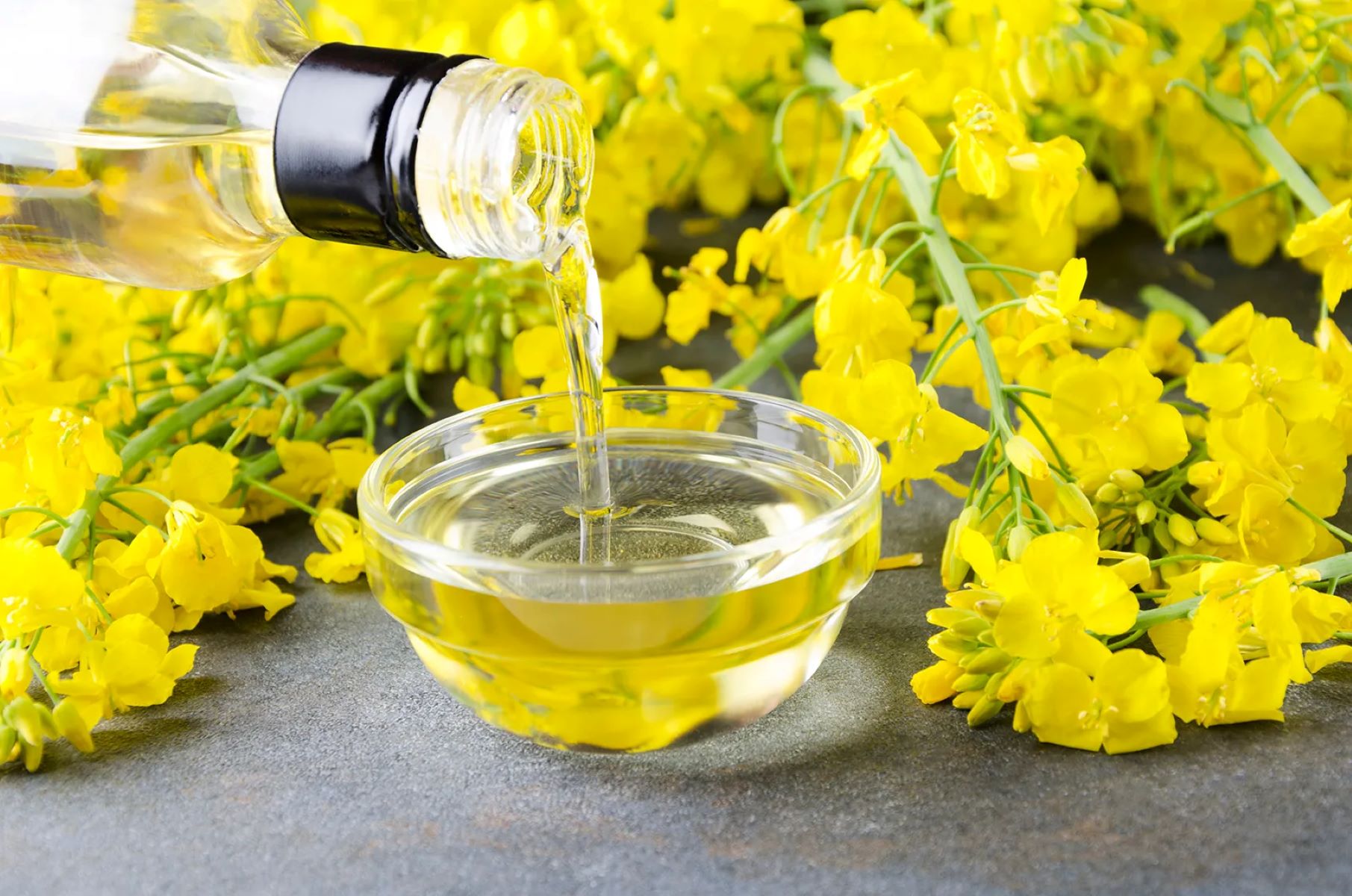Home>Science>The Surprising Reason Why Your Pool’s Cyanuric Acid Levels Won’t Rise!


Science
The Surprising Reason Why Your Pool’s Cyanuric Acid Levels Won’t Rise!
Published: February 1, 2024
Discover the science behind the inability of your pool's cyanuric acid levels to increase. Uncover the surprising reason and find a solution!
(Many of the links in this article redirect to a specific reviewed product. Your purchase of these products through affiliate links helps to generate commission for Regretless.com, at no extra cost. Learn more)
Table of Contents
Introduction
Maintaining a pristine pool involves a delicate balance of various chemical parameters to ensure the water remains safe, clear, and inviting. One crucial component in this equation is cyanuric acid, a chemical compound commonly used in pool maintenance to stabilize chlorine levels and protect them from the degrading effects of sunlight. However, despite diligent efforts to maintain optimal cyanuric acid levels, pool owners often find themselves perplexed by the persistent challenge of preventing these levels from rising. This enigma has left many scratching their heads, wondering why their best efforts seem to yield minimal results.
In this article, we will unravel the mystery behind the seemingly unyielding nature of cyanuric acid levels in pools. By delving into the science behind cyanuric acid, exploring the factors that influence its levels, and uncovering the surprising impact of sunlight on its stability, we aim to equip pool owners with a deeper understanding of this essential pool maintenance component. Furthermore, we will provide actionable insights into maintaining proper cyanuric acid levels, empowering pool enthusiasts to overcome this common conundrum and enjoy their aquatic oasis to the fullest.
Understanding Cyanuric Acid
Cyanuric acid, also known as CYA or stabilizer, plays a pivotal role in pool maintenance by safeguarding the effectiveness of chlorine. This organic compound belongs to the family of triazines and is commonly utilized in outdoor pools to prevent the degradation of chlorine caused by ultraviolet (UV) radiation from sunlight.
In its granular form, cyanuric acid appears as a fine, white, odorless powder that is easily soluble in water. Once dissolved, it forms a protective bond with the chlorine molecules, effectively shielding them from the sun's harmful rays. This interaction is crucial for sustaining chlorine's disinfecting properties, ensuring that it persists in the water long enough to effectively combat contaminants such as bacteria and algae.
Cyanuric acid acts as a stabilizing agent, extending the lifespan of chlorine and reducing the frequency of chlorine addition to the pool. This not only streamlines pool maintenance but also contributes to cost savings for pool owners. By maintaining the proper cyanuric acid levels, pool enthusiasts can optimize the efficiency of their chlorine, thereby promoting a consistently hygienic and crystal-clear pool environment.
Understanding the fundamental role of cyanuric acid is essential for pool owners seeking to maintain a healthy and inviting pool. By grasping the significance of this compound in preserving chlorine's potency and mitigating the impact of sunlight, pool enthusiasts can make informed decisions regarding its application and ensure the optimal balance of chemical parameters in their pool water.
Factors Affecting Cyanuric Acid Levels
Several factors influence the levels of cyanuric acid in pool water, ultimately impacting its efficacy in stabilizing chlorine and maintaining a healthy aquatic environment. Understanding these factors is crucial for pool owners striving to achieve and sustain optimal cyanuric acid levels. Here are the key elements that can affect cyanuric acid levels in pool water:
-
Initial Cyanuric Acid Concentration: The cyanuric acid level in a pool is initially determined by the products used to stabilize the chlorine. When adding cyanuric acid to establish the desired concentration, it is essential to follow the manufacturer's guidelines to prevent over or under-dosing, which can lead to imbalanced levels.
-
Water Dilution and Evaporation: The natural processes of water dilution through rain, backwashing, and splash-out, as well as evaporation, can gradually reduce cyanuric acid levels in the pool. Regular monitoring and replenishment of cyanuric acid are necessary to compensate for these losses and maintain the desired concentration.
-
Pool Size and Volume: The size and volume of the pool directly impact the distribution and dilution of cyanuric acid. Larger pools require proportionally higher amounts of cyanuric acid to achieve and sustain the recommended levels, while smaller pools may experience more rapid fluctuations in cyanuric acid concentration.
-
Sunlight Exposure: Prolonged exposure to direct sunlight can accelerate the breakdown of cyanuric acid in pool water. Ultraviolet (UV) radiation from the sun can gradually degrade cyanuric acid, reducing its stabilizing effect on chlorine. This necessitates regular monitoring and maintenance to counteract the impact of sunlight on cyanuric acid levels.
-
Chemical Interactions: The interaction between cyanuric acid and other pool chemicals, such as chlorine-based products and pH adjusters, can influence its stability and concentration. Understanding the synergies and potential antagonistic effects of these chemicals is crucial for maintaining balanced cyanuric acid levels.
By considering and managing these factors, pool owners can effectively regulate and stabilize cyanuric acid levels, thereby ensuring the sustained efficacy of chlorine and the overall health and clarity of their pool water. Regular testing and proactive adjustments based on these influencing factors are essential for achieving and maintaining the optimal cyanuric acid levels required for a well-maintained pool.
The Impact of Sunlight on Cyanuric Acid
Sunlight, while essential for creating an inviting poolside ambiance, can exert a significant influence on the stability and effectiveness of cyanuric acid in pool water. Understanding the intricate relationship between sunlight and cyanuric acid is paramount for pool owners striving to maintain optimal chemical balance and preserve the efficacy of their pool maintenance efforts.
Ultraviolet (UV) radiation from sunlight poses a dual challenge to cyanuric acid in pool water. On one hand, cyanuric acid serves as a shield, protecting chlorine from the degrading effects of UV rays. However, prolonged exposure to sunlight can gradually degrade cyanuric acid itself, compromising its stabilizing function and necessitating vigilant monitoring and maintenance.
The process of photolysis, induced by UV radiation, triggers the breakdown of cyanuric acid molecules in pool water. This degradation diminishes the protective bond between cyanuric acid and chlorine, rendering the chlorine more vulnerable to UV-induced degradation. As a result, the pool's disinfecting capabilities may be compromised, leading to increased chlorine demand and potential water quality issues.
The impact of sunlight on cyanuric acid levels underscores the dynamic nature of pool maintenance, requiring proactive measures to counteract the ongoing influence of UV radiation. Pool owners must be cognizant of the following strategies to mitigate the effects of sunlight on cyanuric acid:
-
Regular Testing and Monitoring: Implementing a routine testing schedule to assess cyanuric acid levels enables proactive adjustments to counteract the impact of sunlight-induced degradation. By promptly replenishing cyanuric acid as needed, pool owners can sustain the stabilizing effect on chlorine, ensuring consistent water quality.
-
Shade and Shelter: Utilizing natural or constructed shade elements, such as trees, umbrellas, or pergolas, can reduce the direct exposure of pool water to sunlight. This approach helps minimize the UV-induced degradation of cyanuric acid, contributing to more stable chemical levels.
-
Optimized Application: Careful consideration of the timing and method of cyanuric acid application can mitigate the immediate impact of sunlight. Adding cyanuric acid during the evening or early morning, when sunlight intensity is reduced, can enhance its initial stability in the pool water.
By acknowledging and addressing the impact of sunlight on cyanuric acid, pool owners can proactively safeguard the stability of their pool's chemical composition, ensuring sustained efficacy in chlorine stabilization and mitigating the challenges posed by UV radiation. This proactive approach promotes a harmonious balance between sunlight exposure and chemical stability, fostering an inviting and hygienic pool environment for all to enjoy.
How to Maintain Proper Cyanuric Acid Levels
Maintaining proper cyanuric acid levels is essential for preserving the effectiveness of chlorine and ensuring a healthy pool environment. By implementing proactive measures and adhering to best practices, pool owners can optimize cyanuric acid levels and mitigate the challenges associated with its stability. Here are actionable strategies for maintaining and regulating cyanuric acid levels in pool water:
-
Regular Testing and Monitoring: Establishing a consistent schedule for testing cyanuric acid levels is fundamental to proactive maintenance. Utilizing reliable pool water testing kits, pool owners can accurately assess cyanuric acid concentrations and promptly identify any deviations from the optimal range. By integrating this testing regimen into routine pool maintenance, adjustments can be made in a timely manner to uphold the desired cyanuric acid levels.
-
Precise Cyanuric Acid Application: When adding cyanuric acid to the pool, precision is paramount. Following manufacturer recommendations and dosage guidelines ensures that the appropriate amount of cyanuric acid is introduced, preventing over or under-dosing scenarios. Careful application of cyanuric acid supports the establishment and maintenance of the desired levels, contributing to the stability of chlorine and the overall efficacy of pool water treatment.
-
Replenishment and Compensation: Acknowledging the natural processes of water dilution and evaporation, pool owners should be vigilant in replenishing cyanuric acid to compensate for any losses. Regular monitoring of pool water levels and proactive replenishment of cyanuric acid help counteract the gradual diminishment of its concentration, thereby sustaining its stabilizing effect on chlorine.
-
Strategic Timing of Application: Considering the impact of sunlight on cyanuric acid stability, strategic timing of its application can mitigate immediate degradation. Applying cyanuric acid during periods of reduced sunlight exposure, such as early morning or evening, can enhance its initial stability in the pool water, providing a proactive approach to managing its levels.
-
Awareness of Influencing Factors: Understanding the factors that influence cyanuric acid levels, including pool size, chemical interactions, and sunlight exposure, empowers pool owners to make informed decisions. By considering these influencing factors and their dynamic interplay, pool enthusiasts can proactively manage cyanuric acid levels, fostering a balanced chemical environment within the pool.
By incorporating these proactive strategies into their pool maintenance routine, pool owners can effectively regulate and maintain proper cyanuric acid levels, thereby optimizing the stability of chlorine and promoting a consistently hygienic and inviting pool environment.
Conclusion
In conclusion, the maintenance of proper cyanuric acid levels is a pivotal aspect of pool care, profoundly influencing the stability and efficacy of chlorine in safeguarding pool water. The interplay of factors such as initial concentration, water dilution, sunlight exposure, and chemical interactions underscores the dynamic nature of cyanuric acid regulation. By understanding the multifaceted role of cyanuric acid and its susceptibility to sunlight-induced degradation, pool owners can implement proactive strategies to maintain optimal levels and sustain a healthy pool environment.
The impact of sunlight on cyanuric acid stability serves as a compelling reminder of the intricate balance required in pool maintenance. Prolonged exposure to UV radiation can gradually degrade cyanuric acid, compromising its ability to shield chlorine from the sun's degrading effects. However, through regular testing, precise application, strategic timing, and awareness of influencing factors, pool enthusiasts can effectively counteract the impact of sunlight and uphold the desired cyanuric acid levels.
By integrating these proactive measures into their pool maintenance routine, pool owners can optimize the stability of chlorine, reduce chemical imbalances, and promote a consistently hygienic and inviting pool environment. The careful management of cyanuric acid levels not only contributes to water quality but also aligns with cost-effective and sustainable pool care practices.
In essence, the surprising challenge of maintaining cyanuric acid levels in pools can be met with informed decision-making and proactive management. By embracing a comprehensive understanding of cyanuric acid and its interactions with sunlight and other influencing factors, pool owners can navigate this essential aspect of pool maintenance with confidence and efficacy. Ultimately, the pursuit of proper cyanuric acid levels is a testament to the dedication and commitment of pool enthusiasts to provide a safe, clear, and enjoyable aquatic oasis for all to relish.














